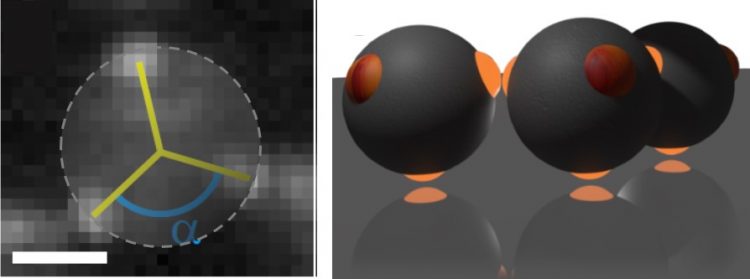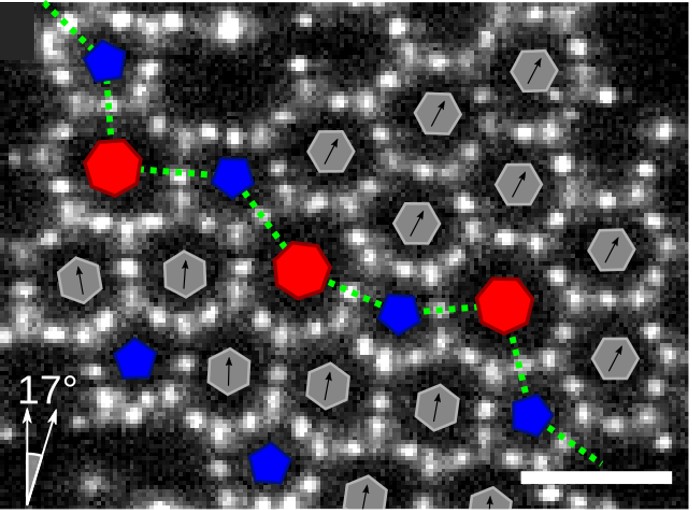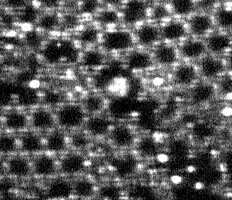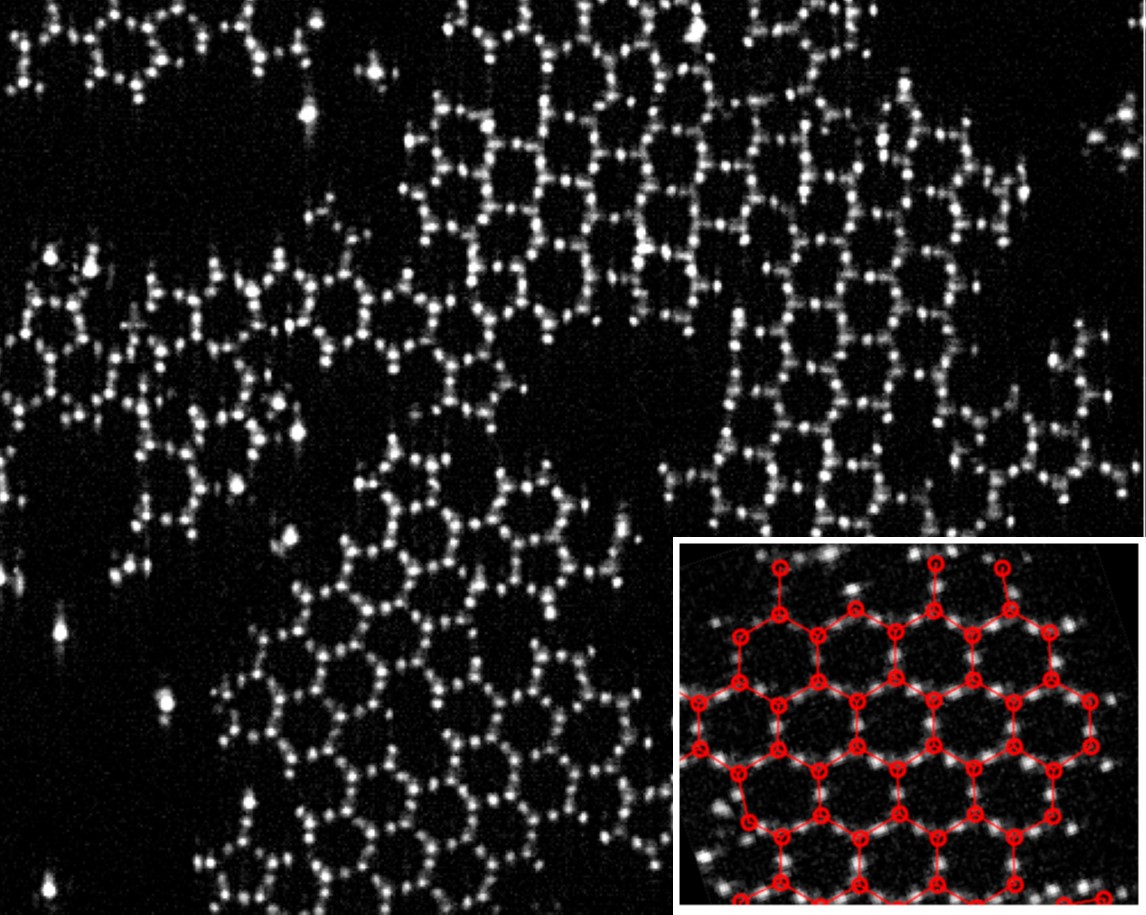2D materials have attracted increasing interest recently due to their peculiar mechanical and optoelectronic properties. Here we assemble the analogue of atomic graphene using specially coordinated “patchy” colloidal particles. The particles have a diameter of 2 micrometers, and have patches arranged in tetrahedral symmetry (see Fig. 1). By attaching one of the patches to the capillary wall, we obtain pseudo-trivalent particles that assemble into the open honeycomb lattice.
Such open crystal structures with lattice constants of the order of a micrometer have applications as photonic crystals, materials with an optical band gap. To obtain well-equilibrated crystal flakes, we adjust the attraction between the patches via critical Casimir forces. The attractive force arises in a near-critical solvent from the confinement of solvent fluctuations between particle surfaces. Using particles with narrow hydrophobic patches, we achieve selective patch-patch attraction, the strength of which we can tune with the temperature offset from the critical solvent temperature. This allows us to slowly “freeze” the particles into the crystalline honeycomb lattice, or anneal the lattice by temperature cycling. The picture above shows a few resulting flakes of colloidal graphene.
We use these direct observations to elucidate the assembly of graphene and the evolution of defects in the graphene crystals. A typical defect in graphene, an alternating sequence of pentagons and heptagons, is shown in Fig. 2. We also study the healing of defects. As an example, the merging of two graphene flakes is shown in Fig. 3.

Fig. 1 Pseudo trivalent particles assembling on a surface
The particles have fluorescently labelled patches; a fluorescent image with particle boundaries indicated by a dashed line is shown on the left. The picture on the right shows a reconstruction depicting surface-bound particles assembling via their free patches.

Fig. 2 Typical graphene defect
The honeycomb lattice consists of sixfold motifs – hexagons, matching the bonding angles of 120°. However, five-fold motifs (pentagons, blue) and seven-fold motifs (heptagons, red) are also observed; though they are not energetically favored, they may form kinetically. Combinations of pentagons and heptagons are even energetically advantageous: the combination reduces bond angle distortions, making them a favourable, frequently observed defect such as shown here in colloidal graphene.

Fig. 3 Healing – merging of two graphene flakes
The confocal microscopy movie shows merging attempts of two crystal flakes. Several bonds are formed, successively merging the grains. The bright spots depict the particle patches, some of which bind to other particle patches throughout the movie.
